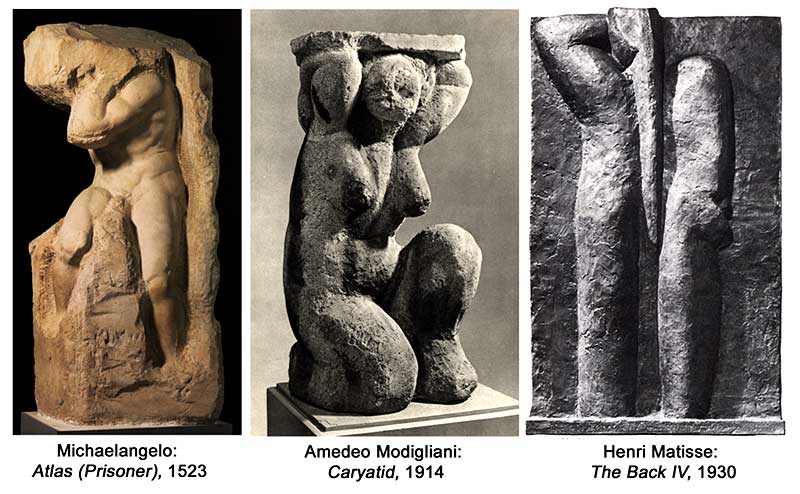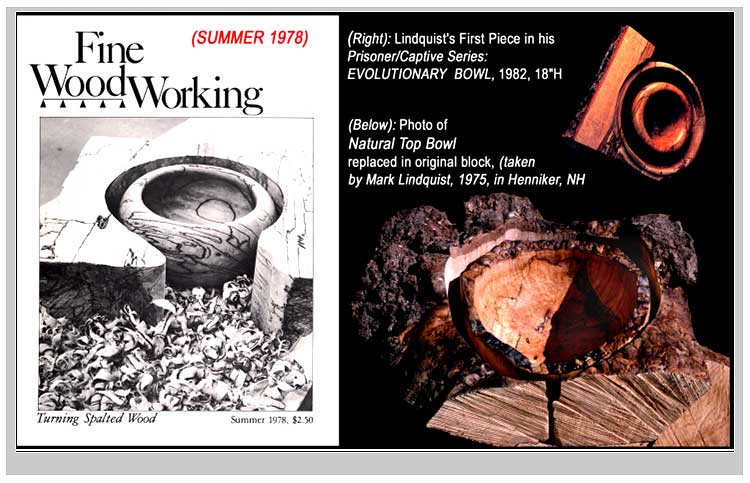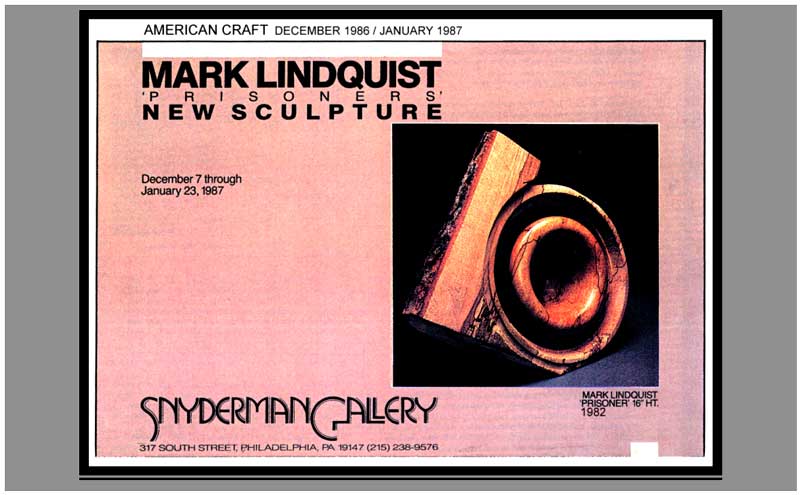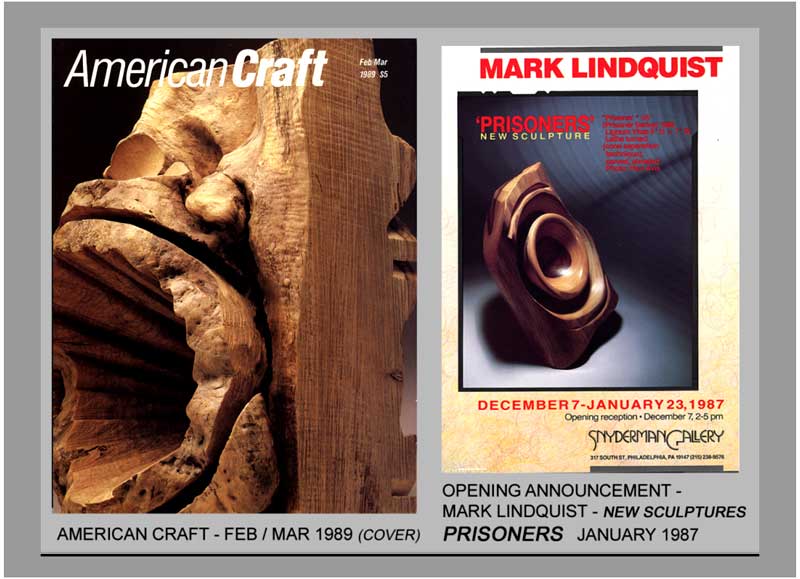|
History of The Captive
Series
Sculptures by Mark Lindquist
The theme of an artwork trapped within
the block of material
from which it will be freed by the sculptor has intrigued and motivated
Lindquist from his years as an art student in the late 60s to the present. This
theme is the basis of a continuing series of sculptures Lindquist began in
1982. The “Captives,” or “Prisoners” as he called the first pieces in this
series, grew out of Lindquist’s art historical studies and his photographic
juxtapositions of his early bowls with the wood from which they came. The
“Captives” are not only self- portraits, but also parodies of the famous
“Prisoners” of Michelangelo, a series of sculptures of slaves left unfinished,
appearing to struggle for release from the block of marble.
Michelangelo’s “Prisoners”
were intended to function architecturally as support elements for a tomb. The
name “Prisoners” appears to derive both from the subject of the sculpture, the
captive slave, and the sixteenth century term for a load-bearing figurative
sculpture, “prigione.” This is the equivalent of the Greek caryatid, which is
historically a draped female figure. In addition to showing the incomplete
release of a form from its original material, the “Prisoners” also show the
tension inherent in a sculpture whose form is constrained by intended
functionality. Lindquist’s “Captives” comment on that duality, with the
non-used functional form being the bowl, rather than the load-bearing column.
Many sculptors have paid
tribute to Michelangelo’s “Prisoners” in their work, for example, Modigliani’s
Caryatid, and Matisse’s “The Backs” series. Lindquist says, “There is
something profoundly spiritual and self-referential about his idea. We are
trapped in our own existence, and we wrestle with issues and ideologies which
try to hold us captive. Another layer of meaning was added to the captive
concept for me when I experienced a serious automobile accident. After the
vehicle I was traveling in at seventy miles per hour rolled over seven times and
came to rest upside down, I experienced imprisonment (or entombment) as I was
unable to move amidst the twisted wreckage. This experience had profound
effects, causing me to re-examine the sculptural idea of turning and struggling
for freedom, resulting in a sculptural device that became self-portraits.”

Images above have been reproduced for nonprofit
educational purposes only. Images may be subject to copyright.

One of the photographic precursors to
Lindquist’s “Captives” appeared on the cover of Fine Woodworking magazine
in 1978 (above), a photo of a turned spalted bowl resting within the remainder
of the turning blank from which it came. In 1982, he created his first formal
“Prisoner,” called Evolutionary Bowl, using the cone-cutting technique
(now commonly used) that he had developed in the mid-70s to enable parting of
the interior of a bowl from the blank. He created the “Prisoner” by not
completing the cone separation, thus decisively keeping the central vessel form
held captive within the outer form of the block.
Evolutionary Bowl
was completed and sold in 1982. It was first published in Lindquist’s book
Sculpting Wood in 1986, and was later featured in an ad in the December
1986-January 1987 issue of American Craft magazine for his show called
“Prisoners” which opened in Philadelphia at the Snyderman Gallery in January
1987.



|
